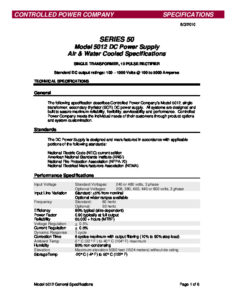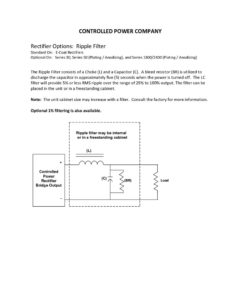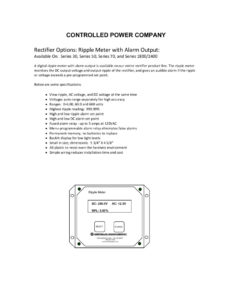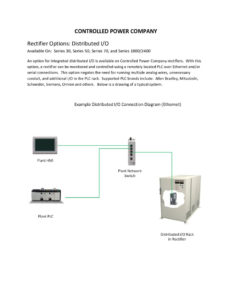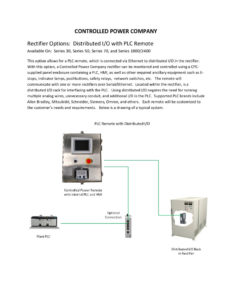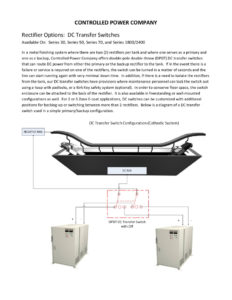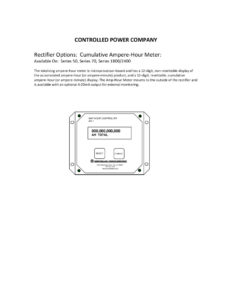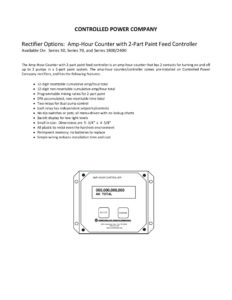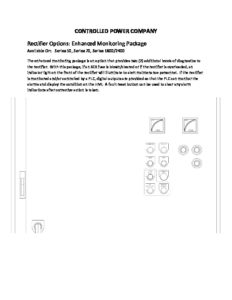Series 50 Rectifier
Description:
The Series 50 is a secondary SCR, single transformer, DC power supply (rectifier) for e-coating, anodizing, and other industrial DC powered applications. The Series 50 rectifiers include two product models: 506 and 5012. The Model 506 is a 6-pulse rectifier that provides reliable, regulated DC power for most DC applications. The Model 5012 is a 12-pulse rectifier used in applications requiring lower output AC RMS ripple and reduced input harmonics.
Both models are available in air- or water-cooled configurations. The Series 50 rectifiers are available in a NEMA 1, NEMA 2, or NEMA 3R enclosure.
Input AC Voltage: 208V – 600V 3 Phase
Output DC Voltage Range: 100V – 1,000V
Output DC Current Range: 500A – 5,000A
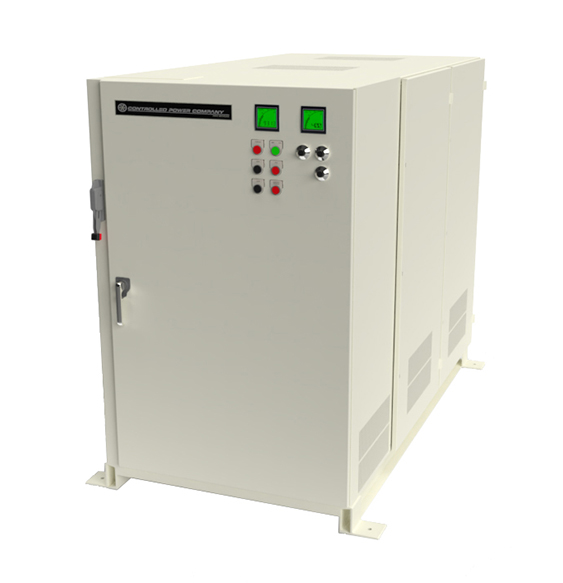
- High efficiency
- Air- or water-cooled flexibility
- Domestic and international voltage capability
- Low ripple
- Tight voltage and current regulation
- Diagnostic options for ease of maintenance
- Plant PLC network integration
- Input Line Variation: ± 5% from nominal (± 10% optional)
- Output Voltage Regulation: ± 0.5%
- Output Current Regulation: ± 0.5%
- Optional AC RMS Output Ripple at Full Current: 5% operating at 25% to 100% output voltage (Model 506); 1% operating at 25% to 100% output voltage (Model 5012) — includes integrated output filtering
- Efficiency: 95% typical, size dependent
- E-Coating
- Anodizing
- Crane Motors
- Ion-Nitriding
- Magnet Charging
- Superconducting Magnet Charging and Discharging
- Electro-Chemical Applications
- Testing/Lab
- Other Industrial DC Powered Systems
Learn more about this product! Read our brochures and other supporting documents!
- What size rectifier do I need?
- Which is better: air- or water-cooling?
- What are the differences between the Model 506 and Model 5012 designs and their applications?
- How can I reduce or eliminate downtime?
- Which leg of the rectifier is grounded?
- Can I control or monitor the rectifier with my PLC?
- How can I reduce the floor space needed for rectifiers used in my process?
- Do I need a separate feeder transformer for the rectifier?
- When do I need a DC switch?
- How can I increase my rectifier current output?
AACD
The Automatic Average Current Density (AACD) is an available voltage control option with this E-Coat rectifier. Based upon the size of the part being painted, the AACD automatically adjusts the DC voltage (throw power) in order to control the amount of paint applied to the part. The result is that over-coating and under-coating are reduced or eliminated; thus saving money related to excess paint usage and rework costs. For additional product and application details, please visit our AACD webpage!
Warranty
Controlled Power Company warrants the Series 50 Rectifier to be free from defects in material and workmanship for a period of one (1) year following shipment from the factory. Controlled Power Company agrees to replace, F.O.B. its factory, any parts which fault through defect in material or workmanship during the warranty period.
Consult the factory for additional warranty details, and a description of start-up services provided.



